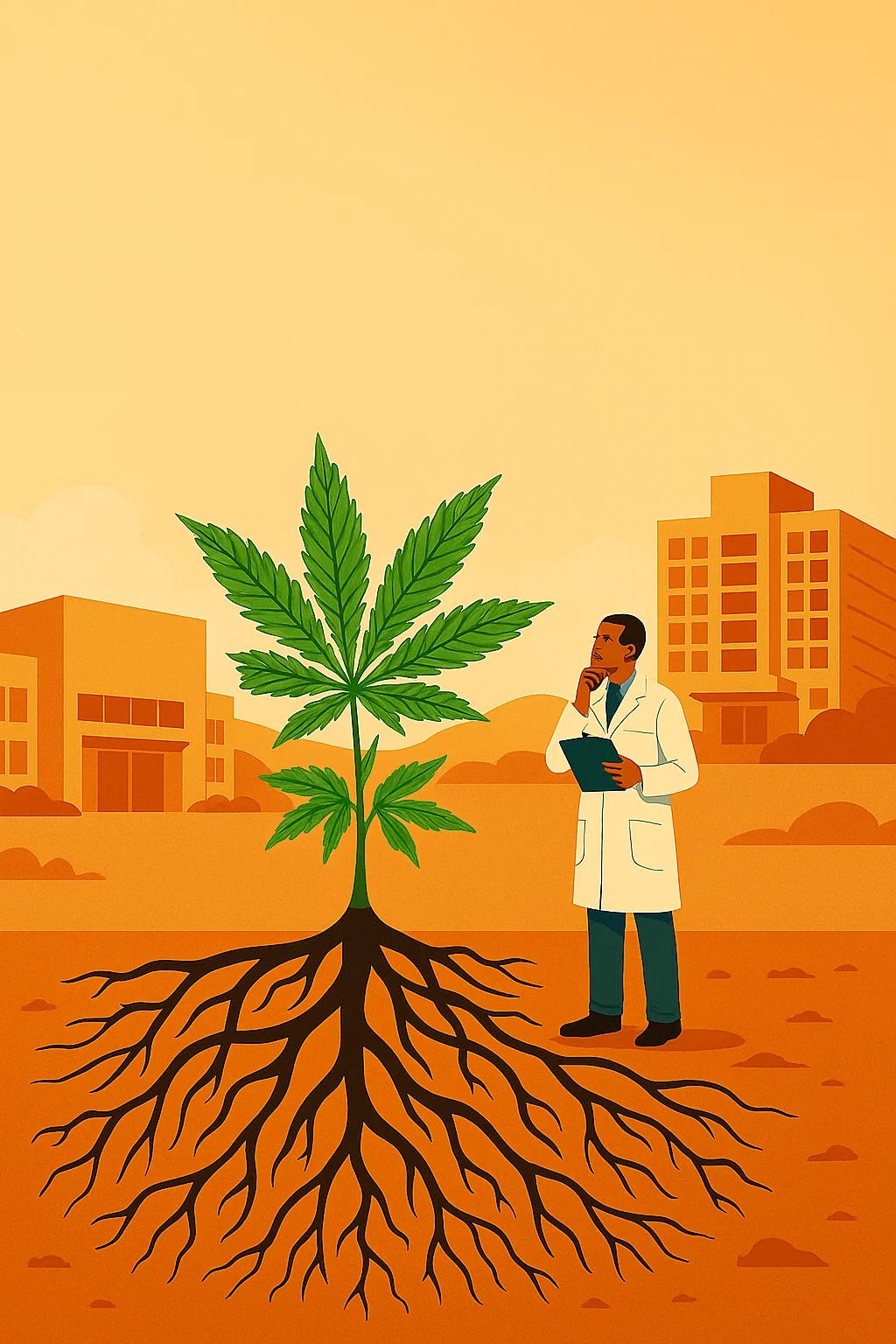
Scotland’s Untapped Opportunity in Medicinal Plant Infrastructure
Share
Scotland is uniquely positioned to become a global leader in the research, licensing, and clinical application of medicinal plants. It has the land. It has world-class universities. It has a growing, cannabis-aware population. But most importantly, it has the opportunity to design an infrastructure-first model—one that other countries are still years away from realising.
In my work with cannabis licensing and policy, I’ve come to believe that medical cannabis is not the end goal. It’s the entry point—a proving ground. What begins with a single, licensed facility in the corridor between Edinburgh and Glasgow could evolve into the most advanced medicinal plant R&D ecosystem in Europe—perhaps even the world.
From Cannabis to Comprehensive Botanical Medicine
Let’s start with cannabis. In 2024, the UK’s medical cannabis market generated over £205 million in sales—yet 95% of prescriptions were filled by overseas producers. That means UK patients, doctors, and health systems are reliant on imported treatments with inconsistent availability, no domestic resilience, and zero long-term economic benefit for Scotland.
Now imagine we build a facility here in Scotland that can:
-
Legally store and handle controlled substances
-
Host preclinical trials in collaboration with local universities
-
Model NHS cost savings through medical cannabis substitution
-
Train professionals in advanced cultivation and pharmaceutical formulation
-
Expand into additional licensed botanical compounds over time
This isn’t just about cannabis. It’s about building an adaptable, modular infrastructure—one that can support a broader future in evidence-based botanical medicine.
Other Plants Already Powering Global Medicine
Cannabis is only the beginning. Consider just a few plants already integrated into modern pharmacology:
-
Opium Poppy (Papaver somniferum): Source of morphine and codeine, vital for pain management
-
Pacific Yew (Taxus brevifolia): Produces paclitaxel, a frontline chemotherapy agent
-
Snowdrop & Daffodil: Contain galantamine, used in Alzheimer’s treatment
-
Turmeric (Curcuma longa): Valued for anti-inflammatory and antioxidant properties
-
Echinacea: Commonly used to support immune and respiratory health
-
Evening Primrose: Treats hormonal imbalance and inflammatory skin conditions
-
Ginkgo Biloba: Studied for its potential to support cognitive function
-
Flax: Rich in omega-3s, linked to cardiovascular health
Most of these are grown and processed abroad—often in China, India, or Germany—where dedicated herbal pharmaceutical zones are already thriving. Scotland can become a European counterpart, but only if we build the infrastructure to support it.
Why Scotland Should Lead—And How
The global market for herbal and botanical medicines is projected to exceed $100 billion annually. It’s fragmented but fast-growing, fuelled by:
-
Rising scepticism toward Big Pharma
-
Surging demand for functional, plant-based treatments
-
Data validating ancient remedies
-
A need to localise supply chains amid climate and geopolitical pressures
What’s missing is a domestic, vertically-integrated system: from cultivation and licensing to research and GMP-certified production. A facility that begins with cannabis but expands to house dozens of scientifically validated plant compounds—connected to Scotland’s university network and research institutions—could redefine the country’s role in 21st-century medicine.
Infrastructure, Not Advocacy, Will Move the Needle
Policy changes slowly. Advocacy is important—but it rarely funds itself. What we need is an economic engine that doesn’t depend on political cycles or public sentiment.
Business Casual’s model links retail directly to research. Every product sold funds something tangible: a facility module, a licence application, a university research partnership. We’ve designed apparel collections—starting with Founder Drop 001—to transparently fund this infrastructure, one piece at a time.
This isn’t a theory—it’s already in motion. Licence applications are underway. Researchers are onboard. We’re actively modelling NHS cost savings through cannabis substitution with the University of Edinburgh’s School of Informatics.
We're not asking for permission. We're building the future anyway.
Looking Forward: A Scottish Identity Rooted in Scientific Progress
This isn’t about rebranding Scotland as an "alternative" health destination. It’s about giving the nation a sovereign role in the next generation of clinically validated, plant-based medicine.
When we say we want to put Scotland on the map, we mean intellectually, agriculturally, economically, and reputationally. Imagine a Scotland known not just for whisky or wind, but for pioneering a facility where AI, ancient pharmacopoeia, and advanced botanical research intersect.
That’s what we’re building. Quietly. Precisely. With purpose.
Because the world isn’t waiting—and neither are we.
Thank you for reading.
Founder Drop 001 supports this vision—beginning with the facility that makes everything else possible.
